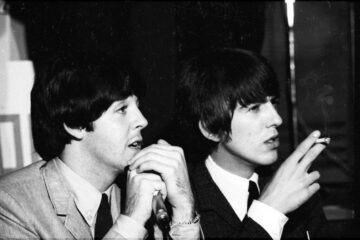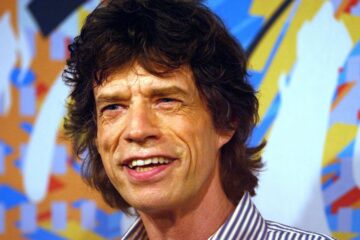There are several pillars of influence that held The Beatles up. The band’s experimentation could only exist on the foundation of a selection of people, places and external inspirations that spurred them on into new and exciting territories. There was George Martin, the fifth Beatle with his vital production impact, Yoko Ono’s sonic artistry, the impact of their various lovers, dreams and home, and, for George Harrison especially, there was the crucial influence that India had on him.
In 1968, the band decamped. Since their breakout to that point, they’d been based in London. In the early days, they got inspiration from travel as they went off on tour and got glimmers into the sonic world of different states and countries in the rare moments when they weren’t being absolutely bombarded by screaming girls. But even since the band decided they no longer wanted to go on the road, they’d been largely at home, each existing in their bubble and continuing on the band’s experimentation and evolution by weaving together their different interests with a combined new obsession with LSD.
But in 1968, they took a joint trip to India to go to Rishikesh and study Transcendental Meditation at the ashram of the Maharishi. While some might pinpoint this as the moment when the band became interested in Indian culture and sounds, they’d be wrong. Really, this trip marked the end of it as the glorious haze surrounding the Maharishi and his teachings faded after some unsavoury interactions with the man and the women on the trip.
In reality, The Beatles’ interest in Indian music was George Harrison’s own thing. In 1966, while John Lennon was busy meeting Yoko Ono, Paul McCartney was supposedly dying in a car crash, and Ringo Starr was doing whatever he got up to, Harrison and his wife Pattie Boyd took their first trip to India.
For Harrison, it was an educational trip. The sole purpose was to go and take sitar lessons with Ravi Shankar, as well as a couple of yoga classes while they were there. But mostly, this was a research expedition as the guitarist wanted to learn the techniques used to make the sonics he’d been obsessed with for some time now, with the intention of bringing those sounds into the world of The Beatles.
Elements of it were already present. On Revolver, released the month before Harrison’s trip, the tracks ‘Love To You’ and ‘Tomorrow Never Knows’ feature Harrison on the sitar as the band’s trippy, experimental sound began to include the instrument as a vital component. But it was after this 1966 holiday that the sounds of India took over Harrison’s whole musical brain.
“When I got back from this incredible journey to India, we were about to do Sgt. Pepper’s [Lonely Hearts Club Band], which I don’t remember much at all,” he said. I’m sure the rest of the members would have said the same as the album was made in a daze of LSD with a cast of the 1960s most famous musical names dipping in and out for a party and maybe a singalong. But for Harrison, the distraction was just as musical as it was pharmaceutical.
“I was into my own little world, and my ears were just all filled up with all this Indian music,” he said. Suddenly, after the trip, the typical sounds of The Beatles didn’t cut it. He added, “So I wasn’t really into sitting there, thrashing through [sings nasally] ‘I’m fixing a hole…’ Not that song, anyway,” mocking McCartney’s storytelling ditty.
But as was always the case for Harrison’s involvement in the songwriting process, he found ways to be included. “If you listen to “Lucy in the Sky with Diamonds,” you’ll hear me try and play the melody on guitar with John’s voice, which is what the instrumentalist does in Hindustani vocal music,” he said, explaining how he brought his distraction and his new interest into the world of the record.



